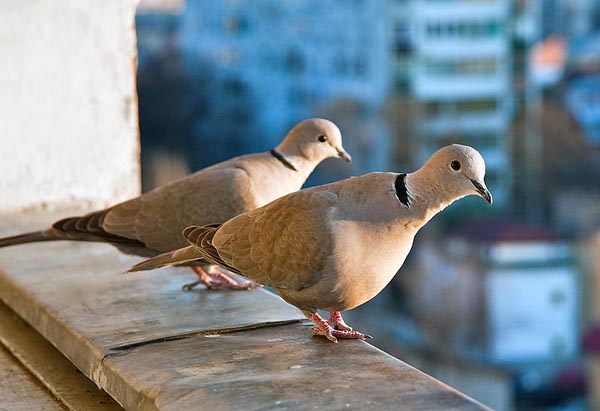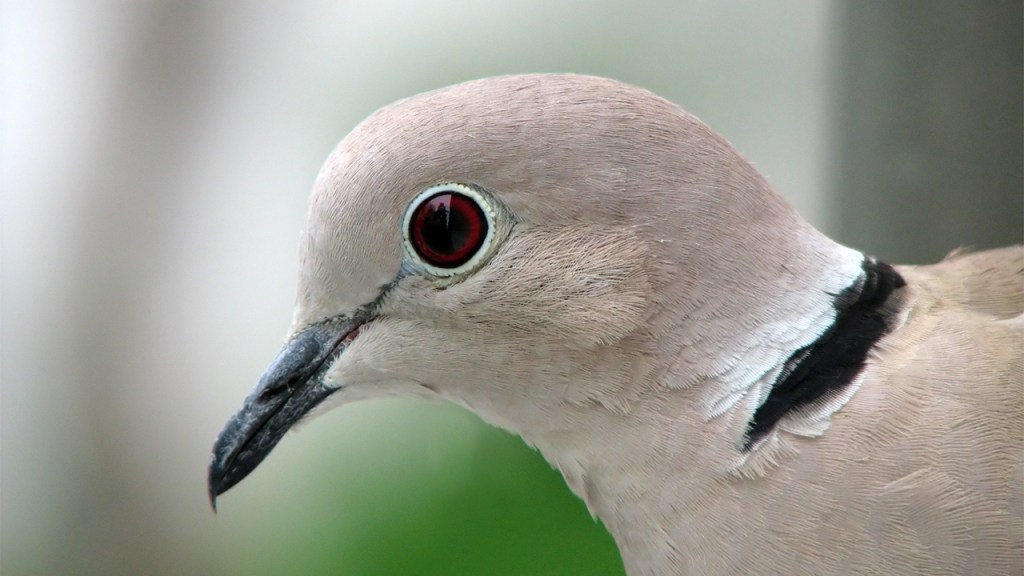The Great Backyard Bird Count (GBBC) — one of the largest citizen science initiatives in the world – annually documents a wide variety of bird population trends.
To my mind, one of the most interesting has been the dramatic spread of the non-native Eurasian collared dove across North America.
The GBBC asks citizen birders to watch an area for at least twenty minutes sometime during a four-day period in mid-February (this year’s count concluded yesterday), and record the birds they see.
Just ten years ago, seeing a Eurasian collared dove would have been a novelty. No more: the doves are now commonly reported by birders in most of the United States.
GBBC data tell the story of this rapid spread.
In the 1970s, the Eurasian collared dove was introduced to the Bahamas. By the early 1980s, the non-native birds made their way to South Florida, where they established populations. Then they began spreading north and west.
Their range appears to have expanded slowly at first. A look at GBBC reports from 1998 show a lot of sightings in Florida, with some birds reported in Texas, Alabama and Arkansas.
By 2001, the doves reached California.
Last year’s bird count results showed the Eurasian collared dove had colonized much of the country. It has not (yet) been reported in New England, but it has reached as far north as Alaska.
The GBBC’s video map dramatically illustrates this expansion.
In my state of Idaho, the doves were first recorded in 2005 by two backyard birders. In subsequent years, the bird was commonly reported in Idaho’s eastern corners. Last year, 132 GBBC participants reported 719 doves throughout the state.
I saw my first Eurasian collared dove in our backyard in 2008 – a banded bird that may have been an escaped pet. Last year, I began seeing the doves hanging around our neighborhood. This year was the first that I noted the species during my own participation in the Great Backyard Bird Count.
What’s going on here? Should conservationists be concerned about this spread?
Unlike some dove species, Eurasian collared doves aren’t migratory. However, they do readily expand into new suitable habitat. In fact, in their native Asia, Eurasian collared doves have been rapidly expanding their range as well – colonizing new countries every year.
The dove is one of those species that adapts well to humanity. The trees, power lines and bird feeders of suburbia provide perfect habitat. The Eurasian collared dove is almost always seen near homes and farms, not unbroken forest or prairie.
Research indicates it is not adversely affecting native mourning doves or other birds. It may simply be filling a new habitat niche created by suburban habitat. But it is still early in the spread.
Could Eurasian collared doves become an invasive threat? That remains to be seen.
Citizen science projects like the GBBC and another citizen initiative, Project FeederWatch, will help scientists continue to track the spread and impacts of the species. It will be interesting to learn what this year’s count found about Eurasian collared doves. If past years are any indication, their populations will likely have grown and spread into new areas of the country.
Have you seen Eurasian collared doves in your area? Have you noted other trends during your backyard bird counts? Let us know what you’re seeing!





Our bird feeder is a recycled parots play pen, about 2×3 ft.. Definitely 25 perhaps as much as 50 birds visit each day, which include 2 eurasion collared doves, 6 stellar jays, 2 scrub jays, an occasional sap sucker, a wide variety of smaller birds impossible to count because of their constant movement, as well as squirrels and who knows what might visit at night.. We enjoy the constant show.. If I sit quietly they will visit within about 4 feet from me and the little birds wander around on the covered deck within a foot of my feet. Being a calm individual seems to set well with all creatures.. I am not a “bird watcher” but simply a watcher of everything, including people.
I have a flock of Eleven that have been at my feeder all winter. (2017-2018)
They have been the only birds at my feeder.
I live in a suburb of Rapid City, SD
Hi,yes I have seen this dove in Banning,Ca.I moved here this past Oct,2017.There are at least 5 pairs in my neighborhood.They are about half a mile south of I-10 along South Sunset Ave.They seem to be fond of the blue berry type off of my tree in front of my house.
Two Eurasian collared doves in my Palmdale, CA yard starting in Feb. They mingle with mourning doves under birdfeeder. I feel like I should be building them nesting boxes or something.
I have these beautiful birds in my yard in N.W. Las Vegas, Nv. There are several nests each year.
two eurasion collered doves,has made it to my front yard bird feeders,in prince george,british columbia,canada.i really enjoy they”re antics,and hope they stay year round.they appeared in january,2018,in minus 32 degree weather,what a tough bird,considering they were originally released in the bahamas.a very beautiful dove.
Yes I’ve seen this dove at my neighbors bird feeder over the last 3 years (2015, 2016, 2017). Two pair seem to be nesting in the area.
Hi there … I have a pair of Eurasian collared doves nesting in a pine tree outside my kitchen window, 150 feet from the high water mark, on Bahia de Todos Santos (Ensenada Bay), in Ensenada, Mexico, the first I’ve seen in 10 years here. Nesting site at 37 25.818N 122 05.36W. Ground elevation: 11 feet. Nest elevation 36 feet.
Found this site while investigating our population of what turns out to be Eurasian collard doves.
2-3 years ago a few showed up in our neighborhood. I thought they were someone’s pet flock. Now there are at least a dozen that have habituated our 4 square block area.
I wouldn’t bother commenting, except that we are in the far NW corner of Montana, 8 miles from the Canadian border.
Hello,
12/21/17
I live in Rohnert Park, California and I just saw a pair of these at my feeder, I see mourning doves often, but don’t remember seeing these birds before.
We live in Oakland Oregon and have these beautiful Doves and hanging with the Morning Dove, plus the Band Tail Pigeon who has left to go south for the winter. My daughter in Eagle Idaho has them in
at there place and we both love and enjoy them all.
Just saw a Cooper’s Hawk pluck a plump Eurasian Collared Dove from a cedar in our backyard. These doves showed up in Ashland, OR a number of years ago and the population has grown ever since.
I have seen such a bird in Pensacola , Florida. Only a sparse amount. However, when you see 2 there are another 10. Are you seeing new birds in my area. Will be happy to spend some time spotting for you.
On November 22, 2017 – one seen with other birds at a feeder in zone 65742 (Rogersville, MO)
A shout out from Colorado Springs, in 2015 we had just a pair of them Just this year I noticed at least a half dozen of them. My thoughts are it’s so difficult to tell the couples apart that it might have been that we had 2 couples until this year. As for the little birds I get House Finches by the dozen and they’re always fun to watch. I have noticed that when the Eurasian collared doves come to eat they run off the Finches but the Finches aren’t afraid to come back to eat with the Eurasian collared doves. Last week we got a flock of Great tailed Grackle, my whole front yard was full and these guys drain a feeder in minutes and will run off the Eurasian collared doves, and the smaller birds.
I enjoy watching all of the birds feed and someone mentioned “hoover” yes they will clean out a feeder in short time but what I noticed is that most of the seed goes on the ground. It could be a poor feeder design as my feeder has a gap that allows the food to slide of the ends of the perch.
Birds of prey are my favorite but I also like to watch the little guys. Interesting thought I use the feeder as a weather forecaster and it works better that the weather man/woman, if the small birds are feeding like crazy usually there’s a storm coming in and it matches my bad knee and back pain, just an interesting observation.
One day I was watching the Eurasian collared doves feeding and all at once they took off and headed for the house across the street and it was like watching a fighter jet as they hugged the roofline and slid up and over the peak, I then saw the shadow of a falcon and understood the speedy departure.